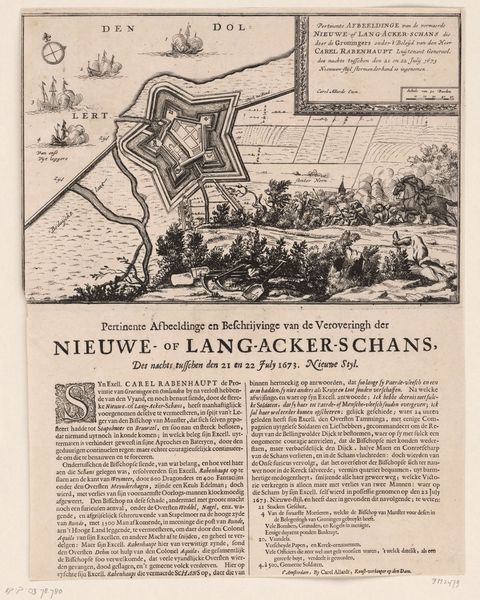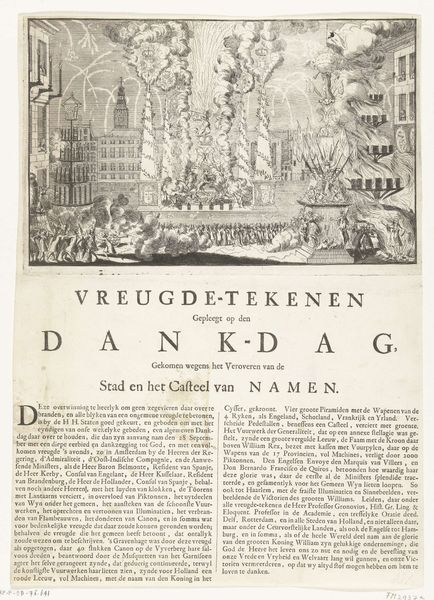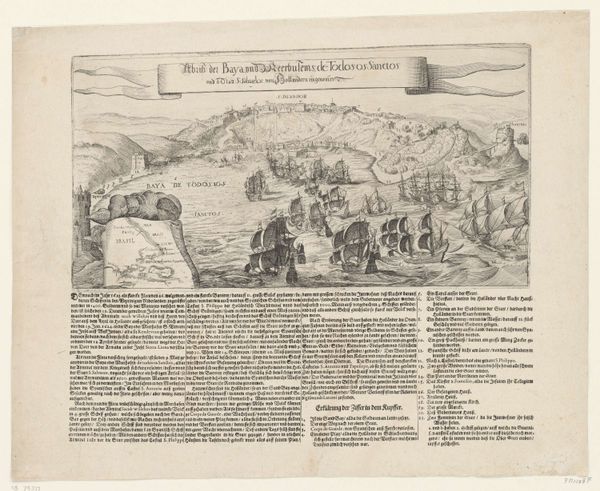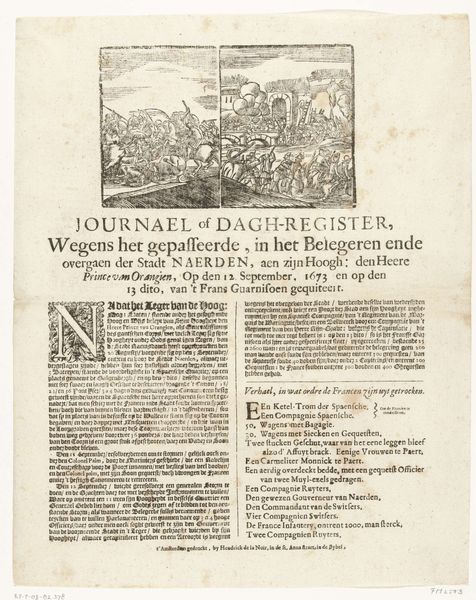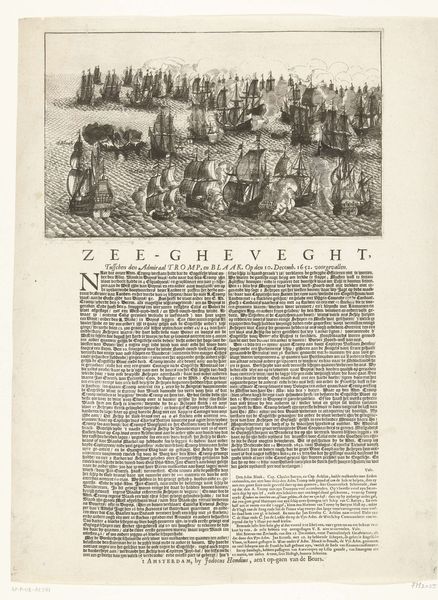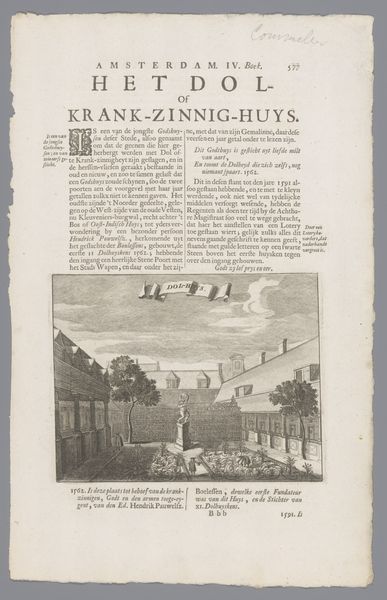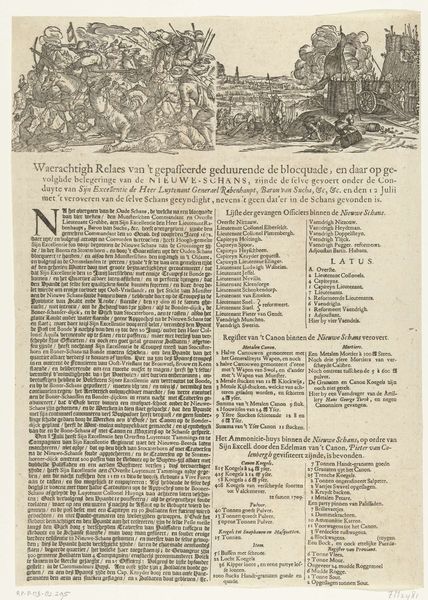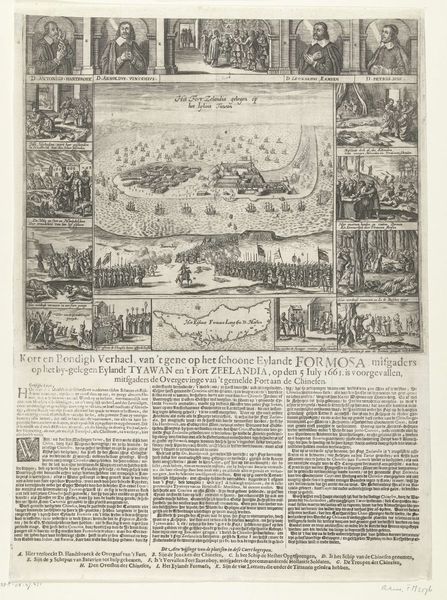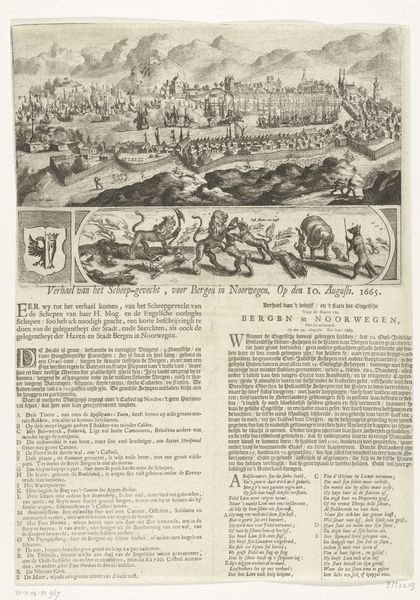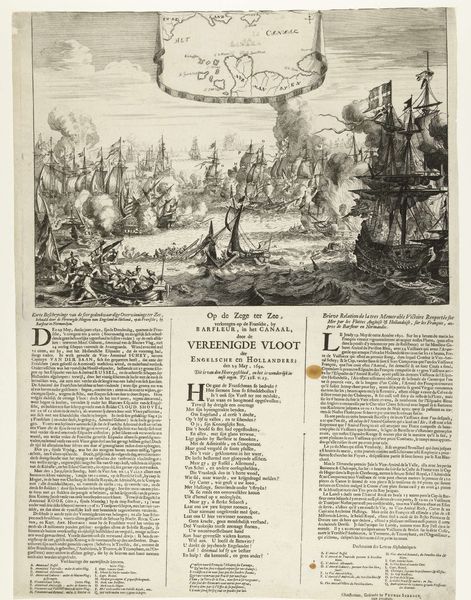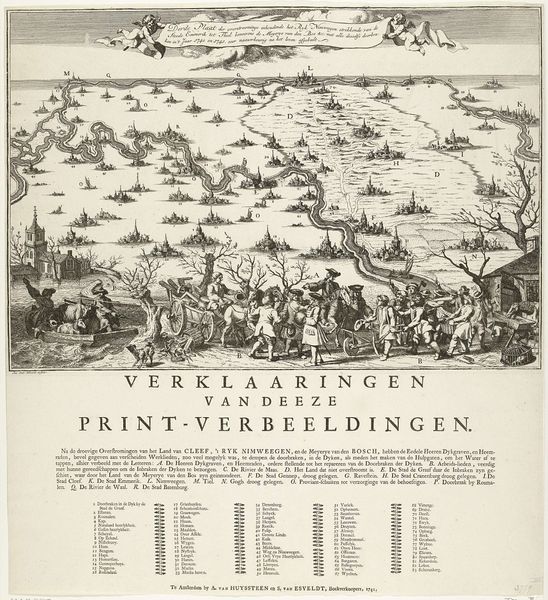
print, engraving
#
baroque
#
dutch-golden-age
# print
#
landscape
#
cityscape
#
history-painting
#
engraving
Dimensions: height 435 mm, width 337 mm
Copyright: Rijks Museum: Open Domain
Editor: This print, "Verovering van Nieuweschans, 1673" by Romeyn de Hooghe, from 1673, depicts the capture of a city. It’s incredibly detailed; the chaos of battle almost feels palpable, yet it's framed by decorative elements. What historical narratives or symbols do you see embedded within this dramatic scene? Curator: This image teems with symbolic power. Beyond the immediate record of military conquest, consider the deeper meanings embedded in its imagery. The portrait at the top, flanked by banners, isn’t just decorative. Whose image is that, and what did that figure represent in 1673? The banners framing the figure have an even more evocative presence in defining which side the artist supports. Editor: It appears to be a powerful leader... almost regal. Perhaps a commentary on power dynamics? Curator: Precisely. That leader’s symbolic potency permeates the whole scene, shaping how we understand the events depicted below. The image of this figure and battle scene create the psychological impact by triggering deeply embedded associations within its intended audience. Is it glorification or condemnation, though? Think about the visual language - the arrangement of figures, the treatment of space, the very lines of the engraving… What story does this symbol-laden landscape tell? Editor: It’s definitely glorifying a victory, but it almost seems to dehumanize the chaotic struggle… Is that common? Curator: Dehumanization served a political purpose. This wasn't simply about showing a battle; it was about crafting a particular narrative. Images, even then, were powerful tools for shaping public opinion and reinforcing ideological narratives. How do these past portrayals then ripple into today’s memory? Editor: That’s a great perspective. It highlights how art and political agendas were—and are—intertwined, constantly shaping our understanding of events. Thank you for the cultural perspective.
Comments
No comments
Be the first to comment and join the conversation on the ultimate creative platform.
